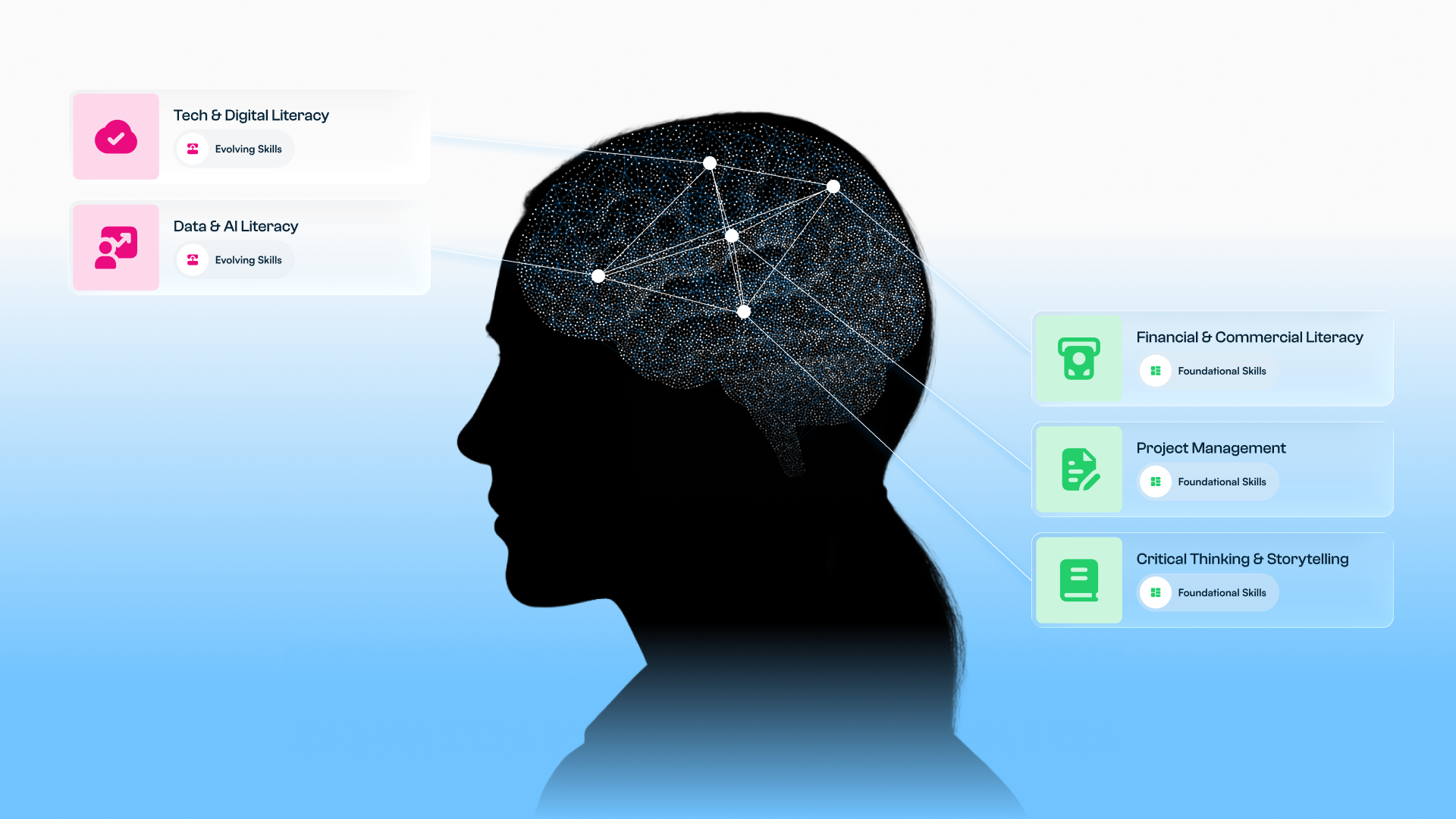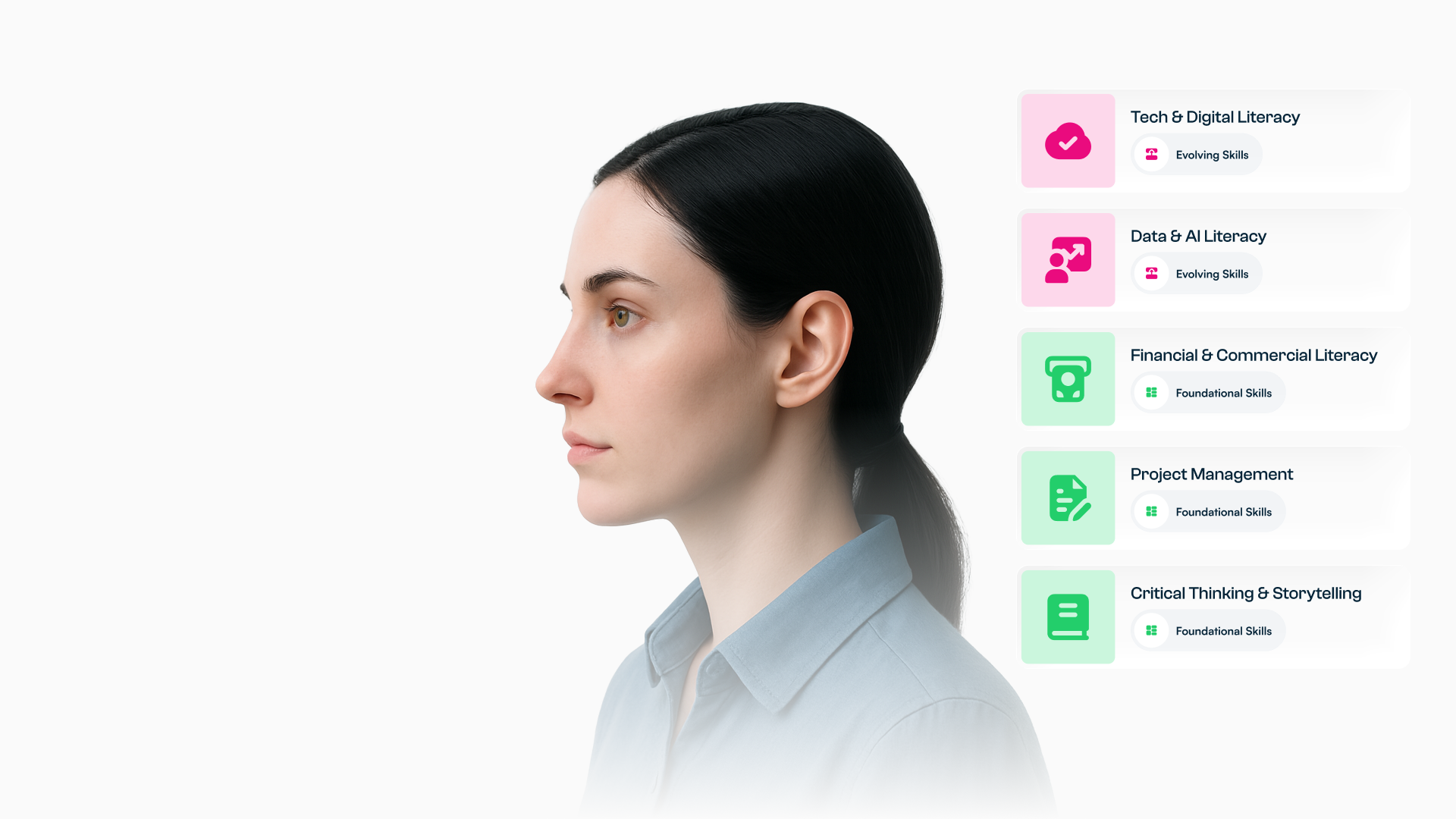Empowering Enterprises With Smart Training, Delivered at the Right Time and in the Right Way, to Shape Tomorrow’s Skills.
data, Tech & ai skills in







Building future-ready skills and delivering transformation through smart learning tech.

Training on the most needed skills that are guaranteed to drive impact.

Custom built technology that’s built to guarantee organisational results.

Custom learning paths or predefined learning experiences.

Our team of Learning Experience Designers and Program Managers help you achieve highest levels of ROI.
Our Learning Technology

Custom Learning Paths
Curated by experts to guide learners on a tailored journey of courses, projects, and certifications. From associate analysts to AI specialists, our paths align learning to real-world career objectives.

Reporting & Analytics
Curate insights in real time with transparent dashboards that track engagement, completion, and performance across teams. Use data-driven reports to spot trends, close skill gaps, optimize learning ROI, and align training with strategic business goals.

Single Sign-on & LMS Integrations
Simplify access with one secure login across all corporate applications including your LMS, boosting engagement and reducing password fatigue. Efficiently manage user provisioning, deprovisioning, and access control, while strengthening data security through centralized authentication.

Bite Sized Videos
Curated into focused modules typically lasting 2 to 7 minutes, our bite‑sized videos help learners absorb key concepts quickly and retain up to 17 % more information compared to longer sessions. Perfect for today’s fast‑paced workflow, these short bursts of learning fit seamlessly into breaks or commutes, boosting engagement and making training more flexible and effective.

Custom Branding
Learners move seamlessly from core concepts to real-world application—practicing skills in safe sandbox environments that mirror the problems they’ll face on the job . Performance is reinforced through interactive assessments, comprehension checks, and industry-recognised certifications from CPD, NASBA, and CPE. This immersive, skills-first approach ensures teams not only absorb knowledge but also develop confidence, speed, and accuracy that deliver measurable impact.

LMS Integrations
Connect Kubicle to your LMS to create a unified learning ecosystem that automates user provisioning, course enrollment, and engagement tracking. Combine performance and learning data to reveal insights, close skill gaps, boost engagement, and drive strategic business outcomes in real time.
Custom Digital Learning Experiences
eLearning
Our eLearning modules provide flexible, self-paced learning built around real business challenges. Created by subject-matter experts, each module combines concise, interactive videos with hands-on assessments and simulated projects, so learners don’t just watch—they apply. Whether it’s mastering Power BI, financial modeling, machine learning, or data visualization, each course uses authentic scenarios drawn from corporate finance, consulting, and analytics environments.
Learners move seamlessly from core concepts to real-world application—practicing skills in safe sandbox environments that mirror the problems they’ll face on the job . Performance is reinforced through interactive assessments, comprehension checks, and industry-recognised certifications from CPD, NASBA, and CPE. This immersive, skills-first approach ensures teams not only absorb knowledge but also develop confidence, speed, and accuracy that deliver measurable impact.

Projects
Our Projects deliver immersive, hands‑on learning through two flexible approaches. Custom Projects are tailored to your organization’s own datasets, systems and business challenges. Whether learners build dashboards, automate workflows or simulate compliance processes, these projects bring deep relevance and strategic value to training.
Alongside this, off‑the‑shelf Projects provide ready‑made, tool‑specific simulations drawn from real business scenarios. Learners work through Excel cost‑analysis cases, Power BI dashboard builds, Tableau visual audits, Alteryx automation and more. Each project includes realistic datasets, step‑by‑step guidance and aligns directly with core courses. All are self‑directed, CPD‑ and CPE‑accredited and designed to reinforce theoretical learning through practical application in a safe sandbox environment.
This dual model enables your team to select proven, off‑the‑shelf practice or choose fully customized projects that reflect your specific strategic priorities and systems.

Virtual Classrooms
Our Virtual Classrooms deliver interactive, instructor-led training directly within the Kubicle platform or embedded into learning pathways. Learners benefit from live sessions featuring polling, breakout rooms, Q&A and real-time instructor guidance to deepen understanding and foster collaboration.
Blended digital features ensure that live instruction is supported by follow-up resources and assessments within the same app environment. Learners can review session recordings, complete in-app quizzes, access additional materials and track progress—making learning cohesive, flexible and continuous.

Hackathons & Workshops
Our Hackathons bring learners together in high-energy, time-boxed events where they work as teams to ideate, build, and pitch solutions to real-world business challenges. These experiential learning sessions foster creativity, critical thinking, collaboration, and rapid problem solving in a way that normal training cannot. They also strengthen cross-departmental connections and elevate employee engagement while unearthing fresh ideas and talent within your organization.
Our Workshops offer targeted, instructor-led deep dives—ideal for mastering a new tool, technique or workflow. Delivered in-person or virtually, each workshop blends expert facilitation with practical exercises and group discussions. Whether the focus is Power BI visualisation, financial modelling best practices or data storytelling, participants leave with new skills, new confidence and a tangible output they can apply immediately.
Together, hackathons and workshops combine experiential, hands-on intensity with focused skill-building that transforms learning into actionable results.































